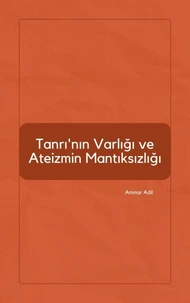This book is a critical exploration of miracles, applying consistent standards of evidence to subjects often treated with bias. Building on the author's earlier works, it examines miracles attributed to Prophet Muhammad ?, analyzing them with the same logical criteria skeptics and atheists use to defend other widely accepted beliefs. It begins by defining what qualifies as a miracle and addressing common misconceptions, emphasizing that discussions of extraordinary claims require clear and consistent standards of proof.
Without such standards, debates about miracles, evolution, or historical events like the 1969 moon landing become meaningless. These two additional topics are used as comparisons, showing how evidence is often inconsistently evaluated. The goal is not to disprove them, but to demonstrate that the same reasoning could validate belief in miracles. The book also highlights a common problem among believers: the expectation that religious claims must always meet strict rational standards, while skeptics often accept their own beliefs without equivalent scrutiny.
By exposing these inconsistencies, the book provides a framework for fair and critical evaluation of all claims, religious or secular. Written in a clear and practical style, the book avoids abstract speculation, focusing on logic, evidence, and reasoned analysis. Each chapter systematically examines its subject, exposes contradictions, and equips readers to form well-informed conclusions. Ultimately, this book aims to level the playing field in discussions about miracles, God, and historical events.
It invites readers to question assumptions, think critically, and approach extraordinary claims with both skepticism and open-mindedness, showing that rational inquiry and faith can coexist.
This book is a critical exploration of miracles, applying consistent standards of evidence to subjects often treated with bias. Building on the author's earlier works, it examines miracles attributed to Prophet Muhammad ?, analyzing them with the same logical criteria skeptics and atheists use to defend other widely accepted beliefs. It begins by defining what qualifies as a miracle and addressing common misconceptions, emphasizing that discussions of extraordinary claims require clear and consistent standards of proof.
Without such standards, debates about miracles, evolution, or historical events like the 1969 moon landing become meaningless. These two additional topics are used as comparisons, showing how evidence is often inconsistently evaluated. The goal is not to disprove them, but to demonstrate that the same reasoning could validate belief in miracles. The book also highlights a common problem among believers: the expectation that religious claims must always meet strict rational standards, while skeptics often accept their own beliefs without equivalent scrutiny.
By exposing these inconsistencies, the book provides a framework for fair and critical evaluation of all claims, religious or secular. Written in a clear and practical style, the book avoids abstract speculation, focusing on logic, evidence, and reasoned analysis. Each chapter systematically examines its subject, exposes contradictions, and equips readers to form well-informed conclusions. Ultimately, this book aims to level the playing field in discussions about miracles, God, and historical events.
It invites readers to question assumptions, think critically, and approach extraordinary claims with both skepticism and open-mindedness, showing that rational inquiry and faith can coexist.

 , qui est-ce ?
, qui est-ce ?